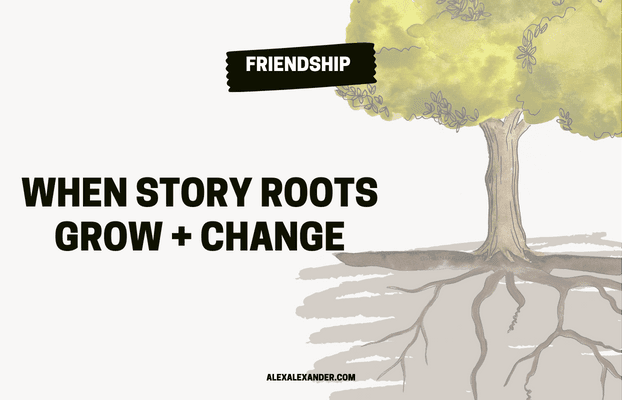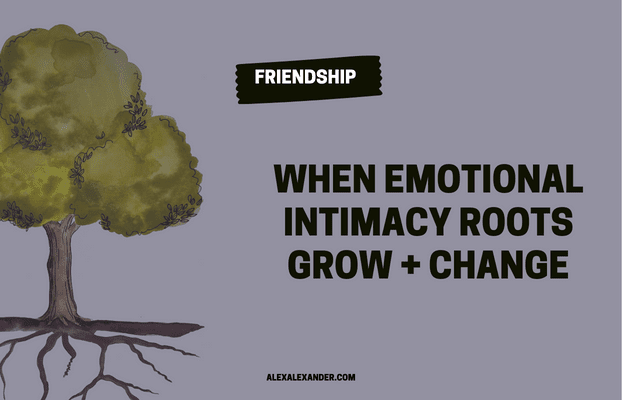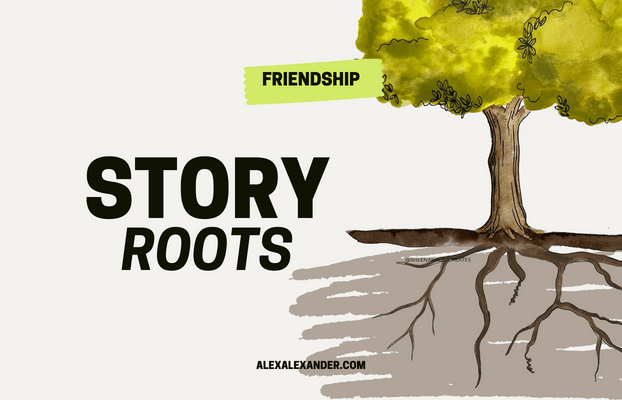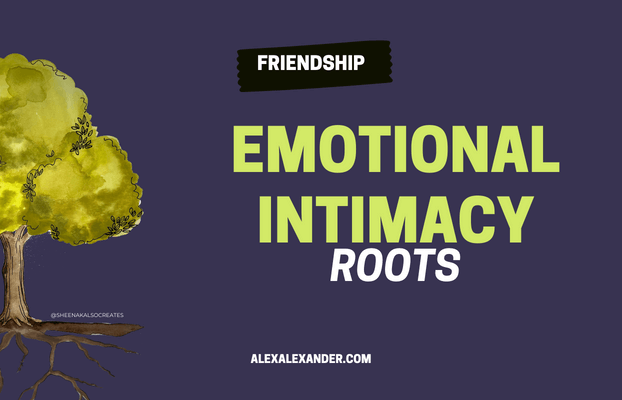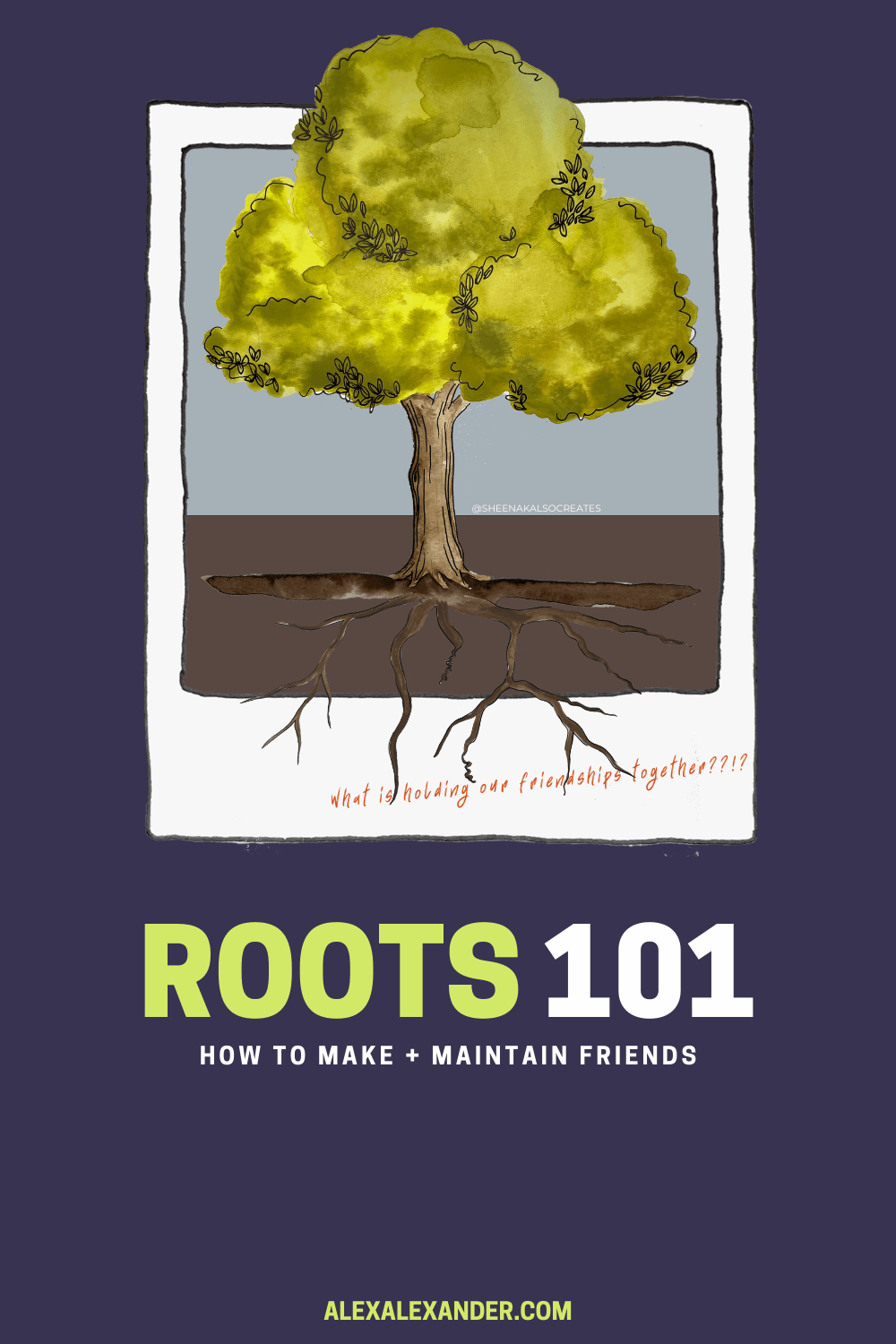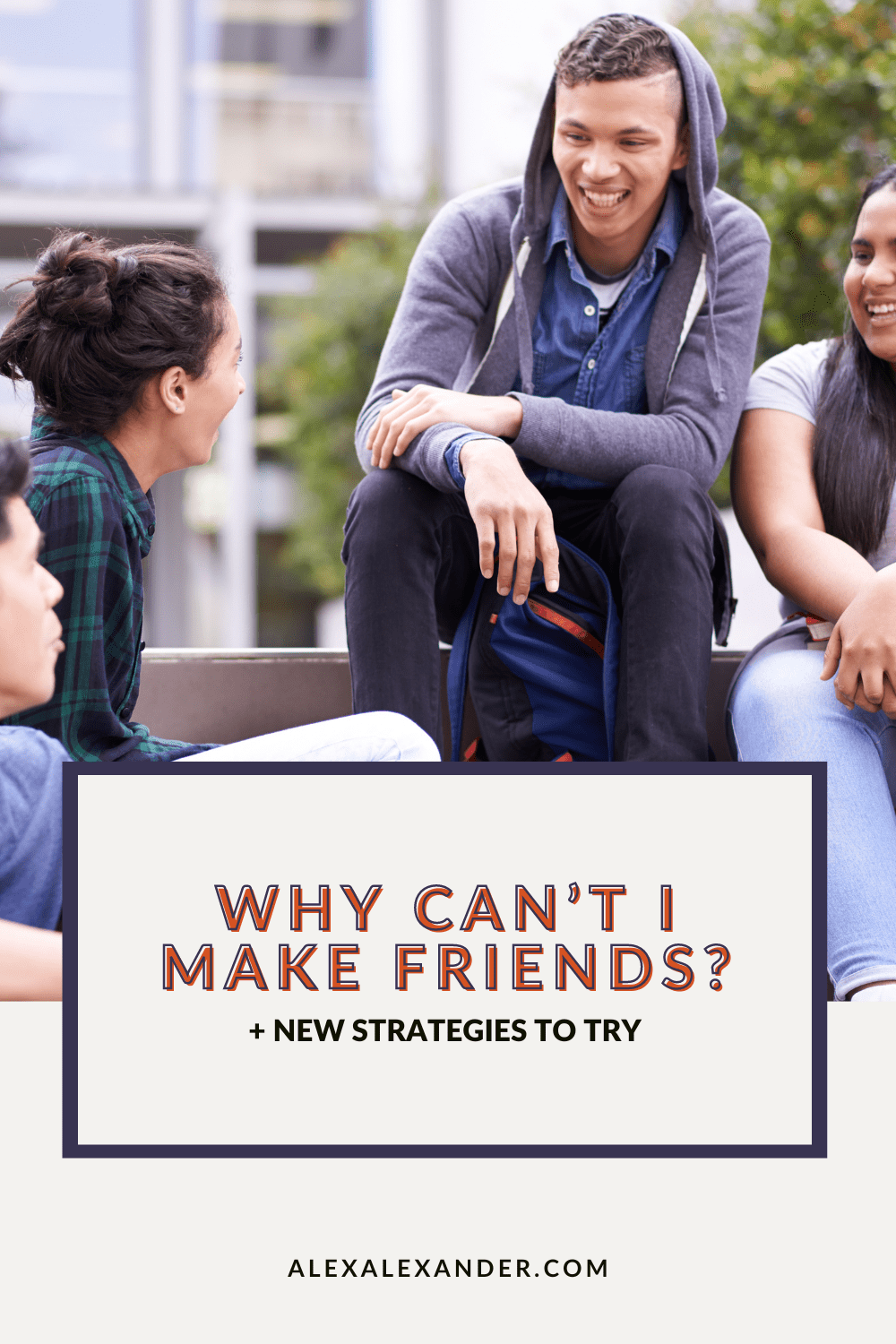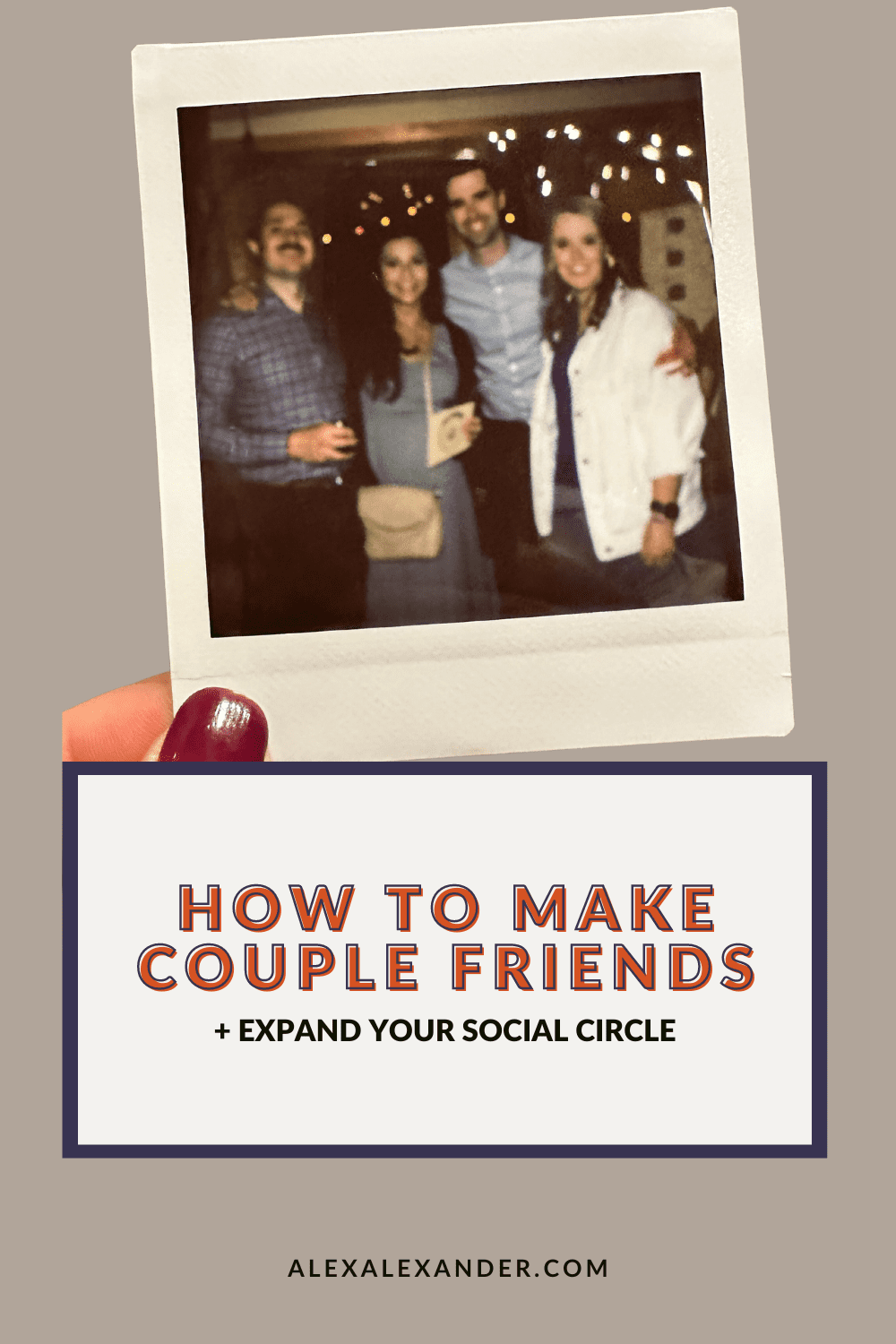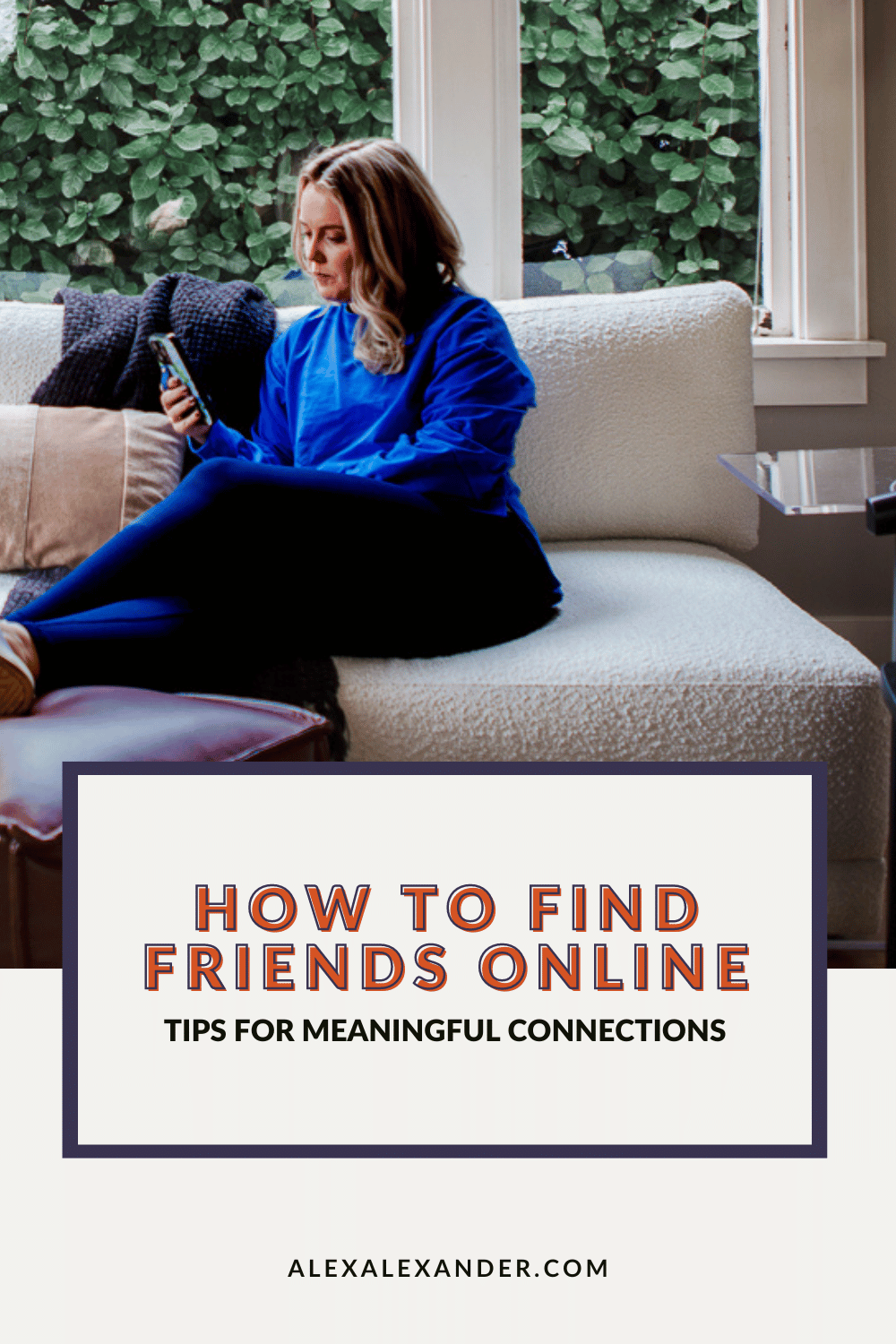
My friend, A, has a daughter, B – seriously – those are their first initials.
B came home from her first day of kindergarten and proudly announced, “Mom! I’ve found my best friend.”
“What makes her a best friend?” A asked her daughter.
“She shares her crayons.”
“She picks me first for games at recess.” “She tells me her secrets.”
A had never pushed the idea of a best friend, so where did this idea come from?
Furthermore, what makes B believe that those actions are “best friend actions?” Observing other kids and their friends?
Overhearing other parents?
The book they read at storytime?
We may never know the answer, but the result is the same –
One day is all it took for B, age 5, to create a story root.
PODCAST EPISODE! I recorded an episode all about the three kinds of roots. Listen now!
QUICK BREAK DOWN of STORY ROOTS
Your story roots are your beliefs about your friendships. Your beliefs inform your expectations.
Your expectations are confirmed or contradicted by evidence.
Evidence is collected when actions meet or contradict your expectations and your beliefs.
ALL ROOTS LEAD TO STORY ROOTS
Emotional Intimacy Roots
Information helps you take meaningful action: the details you collect, the shared history, the small intimacies, the big deep secrets.
You want to make your friend feel like “my friends know me.” Your friend casually mentioned these were their favorite cookies a few weeks ago, so you stop on the way to their house and pick up a box of the cookies.
Showing up with your friend’s favorite cookies – the action– becomes evidence that supports the story root – “my friend knows me.”
Shared Experience Roots
If you brought the cookie to a party your friend wasn’t attending, how would your friend know you were paying attention to the little details they mentioned?
You need to spend time together or connect (shared experience roots) to act.
Shared experience roots – time together or time spent connecting – are also where we appreciate story roots.
We want friendships that make us feel something.
And do you know what makes us feel something?
When an action reinforces a belief.
When you show up with your friend’s favorite cookies they might think, “Oh my gosh! You pay attention to the smallest details!” and are hit with a rush of the warm fuzzy feeling of friendship.You won’t be able to experience that feeling or see the signs your friend cares if you weren’t present for the action.

CAN I ADD YOU TO THE GROUP CHAT?
DON'T MISS AN UPDATE - SIGNUP FOR OUR WEEKLY NEWSLETTER.
You’ll get the full scoop on everything we’ve been up to in the last seven days – podcast episodes, blog posts, and updates, plus an exclusive note from Alex every week with her latest, unedited thoughts.
What are Story Roots?

Some examples:
- “We are best friends.”
- “We are family.”
- “We show up for each other.”
- “We care about each other.”
- “We will be friends for life.”
- “We work together.”
- “I can depend on this friend.”
- “We were friends before we were even born. We’re friends for life.”
- “We are sisters-in-law now.”
- “I can trust them with anything.”
- “They would help me if I needed them.”
- “This person is my person.”
“I trust this person will show up for me.” - “It’s safe to tell this person about my mistake.”
- “This person will comfort me in hard moments.”
- “It’s ok to let my guard down.”
- “I want to keep this person in my life.”
- “They will understand this because we’ve had similar experiences.”
Growing initial story roots
Evidence creates a pattern and we choose a belief based on the pattern.
Story roots are often, but not always, the last roots to develop with friends. We spend time together and collect emotional intimacy roots.
Once we collect enough memories, details, and intimacies – emotional intimacy roots/evidence, there is a tipping point. You go from:
“Are they my friend?” to “They are my friend.”
… OR “Can I trust them?” to “I trust them.”
… OR “Will they support me?” to “They are supportive.”
You chose to believe the statement instead of continuing to ask the question.
You have selected a belief about this friendship.
You have a new story root.
“They care about me.”
That belief comes with expectations.
“My friend cares about me” will hold different expectations between one friend and another. Some possible expectations:
- My friend will listen to me vent.
- My friend will keep my secrets.
- My friend will comfort me in hard times.
- My friend notices details about me.
- My friend respects my personal space and things.
- My friend will work with me to maintain a healthy friendship.
But, where do these expectations come from? Have you actively considered your expectations, or are these expectations you’ve picked up from external sources?
- Movies, TV, books, or social media. Observing other people’s friendships.
- Actions you value in other friendships.
- The ways you show up for people you believe you share a “true friendship” with.
- Phrases, stories, and messages you’ve heard growing up.
The more time you spend together, the more opportunities you have to take note of your friend’s actions and notice evidence that continues to support your belief.
That evidence creates a pattern.
You trust the pattern.
The pattern makes this friendship feel comfortable, low-risk, stable.
This pattern makes you believe this is a strong friendship.
And so, the cycle repeats.
You spend time with your friend. You notice more evidence which causes you to trust (or question) your story roots.
You feel comfortable together. You spend more time together. You collect more roots and evidence. You trust your story roots about this friendship. So on and so forth.
This is an example of creating a belief after collecting enough evidence to support it.
You also create beliefs:
- Before there is evidence.
- Due to societal stories and pressures.
- Because you’ve been told you “should” hold that belief.
PODCAST EPISODE! ” How to Make Friends as. Grown-Up.” Listen now!
FRIENDSHIP PROBLEM? MIGHT BE A STORY ROOTS
It is hard when a belief we trusted in no longer feels true – which happens when a story root withers or dies.
Friendships struggle, fights happen, pauses occur, and friendships might end.
- You don’t know your story roots or expectations.
- You are holding tightly onto outdated story roots.
- You have one set of expectations for all your friends.
- You’ve never communicated your story roots or expectations.
- Not seeing the evidence – looking for only big, grand gestures, ignoring friends trying to show up because “it’s not what you wanted,” or spending all your time looking for red flags rather than positive evidence.
- Not allowing for mistakes – as in taking one piece of negative evidence and letting it erase years of positive evidence.
- Choosing a story root that doesn’t have a pattern of evidence yet, and then being disappointed.
STORY ROOTS keep us connected.
Story roots can be why we initiate, connect, or think of each other.
Countless people have been a part of your life – classmates, family, teammates, neighbors, community members, co-workers, romantic partners, past friends.
We maintain contact with some because we share a similar interest or because we both went through a life-altering experience (illness, death) and share emotional intimacy roots.
We stay in contact with many of our long-term friendships or family relationships because of story roots:
- “I should call my grandma. We are family. A good grandchild calls their grandmother regularly.”
- “I need to see my childhood best friend when I am home for Christmas. We’ve been friends for so long. I should make an effort.”
- “I care about that person. I really should call them.”
- “They are my best friend. I need to make an effort to reach out more often.”
We care about these relationships, so we put in the effort to support the story roots on our end, but sometimes it’s important to take a step back and decide if you feel they are creating evidence to support your story roots. If they aren’t, you might feel unnecessary pressure to hold this relationship together from your side.
Curious how to keep a friendship strong? Read about the other types of roots.
